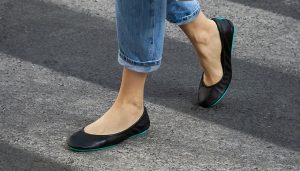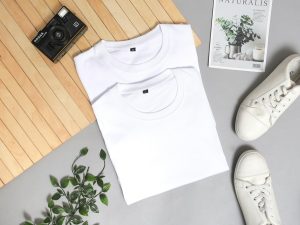Fabric Dyeing Techniques

Putting it for the layman, fabric dyeing is a process of applying dye of varied colors to using different techniques and achieving the desired results.
The process selection for dyeing depends on the type of fabric and the color in which it will be dyed. There is a variety of fabric dyes available that produces different results.
Factors such as water fastness, light fastness and the fabric’s absorption abilities are kept in mind while dyeing.
The 5 Main Steps of the Fabric Dyeing Process
Understanding the steps involved helps to appreciate how fabric gets its vibrant and lasting colors.
1. Preparation of the Fabric or Fiber
The material (fiber, yarn, or fabric) is cleaned to remove oils, dust, sizing, or other impurities.
This ensures even dye absorption and better colorfastness.
2. Preparation of the Dye Bath
A dye solution is prepared using the right combination of dye, water, and chemicals (like mordants or fixatives).
The type of dye used depends on the fiber content (e.g., reactive dyes for cotton, disperse dyes for polyester).
3. Dyeing (Immersion or Application)
The fabric is dyed using the selected method—like piece dyeing, yarn dyeing, or solution dyeing.
Temperature, pH, and time are carefully controlled to ensure even color distribution.
4. Fixation of the Dye
The dye is “fixed” to the fabric using heat, steam, or chemicals, making it resistant to fading or washing off.
This step locks in the color and boosts durability.
5. Washing & Finishing
Excess dye and chemicals are rinsed off.
The fabric is dried, softened, and sometimes given extra finishes like wrinkle resistance or water repellency.
Dyes come in the form of powders, pastes, crystals and liquid dispersions. The available forms can be natural as well as synthetic. So different types of dyes and dyeing techniques are used for the plethora of fabrics available. Some of the common methods followed by textile processing houses are:
BALE DYEING:
This method is regarded as one of the cheapest and low-cost methods of fabric dyeing. This method is prominently used for dyeing cotton fabric. In the process of Bale, dyeing warp threads get coloured and weft threads remain white. It is one of the time and cost-saving methods as it’s done using special machines.
How Bale Dyeing Works:
Fabric Preparation:
Cotton fabric is folded, stacked, and tightly compressed into bales. These bales are tied together to maintain their shape.Dye Application:
The dye is injected or soaked into the bale under pressure or by immersion. Since the fabric is packed tightly, the dye may not penetrate uniformly—resulting in a more uneven or mottled appearance.Fixing the Dye:
The dyed bale is then steamed or heated to fix the dye and ensure colorfastness.Unfolding & Drying:
After dyeing, the fabric is opened, washed, and dried.
Fun Fact: It plays an important role in industrial textile production where cost and speed matter more than aesthetics.
Ombre Dip Dye
Ombre dip dye is a modern and artistic method where fabric transitions gradually from light to dark (or one color to another). It’s one of the easiest and most popular ways to dye fabric for fashion lovers and DIY enthusiasts.
✂️ What You Need:
🪄 Steps to Ombre Dip Dye:
Prepare the dye bath
Mix the dye in a bucket with water. Add salt or fixative if needed.Wet your fabric
Dampen the fabric with clean water. This helps the color blend smoothly.Dip the fabric
- Start by dipping the bottom of the fabric in the dye for the longest time.
- Raise the fabric slightly and dip the next section for a shorter time.
- Continue until the top gets the lightest tint or remains undyed.
Create smooth transitions
Move the fabric gently up and down in the dye bath to soften the color lines.Set the color
Let the fabric sit for a few minutes. Then rinse in cold water until it runs clear.Dry properly
Hang the fabric to dry away from direct sunlight for best results.
Shibori Dyeing
Shibori is a Japanese dyeing technique that uses folding, binding, or stitching fabric before dyeing. It often uses indigo dye for a bold blue effect.
Common Shibori methods:
Arashi: Fabric is wrapped around a pole.
Itajime: Fabric is folded and clamped between wood blocks.
Kumo: Fabric is gathered and bound tightly.
Why try Shibori:
- Creates striking geometric patterns.
- Offers endless design options.
Tie-Dye
Tie-dye is a fun and vibrant method that involves folding, twisting, or tying fabric before applying dye. This creates random, colorful patterns.
Steps:
- Twist or tie the fabric with rubber bands.
- Apply different dyes to each section.
- Let it sit for a few hours, then rinse.
Why it’s loved:
- Great for DIY projects.
- Unique results every time.
- Suitable for kids and beginners.
BATIK DYEING:
In this method, the designed or patterned areas are covered with wax to avoid getting dyed. The resultant fabric has a blend of colours which are intermixed with each other. This method originated in Indonesia. The artists get a chance to present their creativity and skills as the patterns achieved are unique in nature.
Steps:
- Draw designs with melted wax on the fabric.
- Dip the fabric in dye.
- Remove the wax by boiling or ironing.
Highlights:
- Detailed and artistic designs.
- Great for wall hangings, scarves, and ethnic wear.
BEAM DYEING:
This process of dyeing is done more for woven or knitted fabrics. A beam dyeing machine is used for this technique. In this type of dyeing method, the fabric is rolled on a perforated beam and then it is put into a closed container or vessel and pressure is applied to it. The dye circulates through the holes in the beam, dyeing the fabric as it passes through.
How Beam Dyeing Works:
Winding the Fabric:
The fabric is wound in a continuous, open-width form around a perforated beam. Care is taken to avoid wrinkles or tension.Loading into Dyeing Machine:
The beam is placed inside a high-pressure dyeing vessel.Dye Circulation:
The dye solution is pumped through the beam under high pressure. It flows through the fabric layers, ensuring even color penetration.Fixing & Rinsing:
After dyeing, the color is fixed using heat or chemicals. The fabric is then rinsed, softened, and dried.
Dip Dyeing
Dip dyeing is one of the simplest ways to dye fabric. The fabric is dipped into dye, often only partially, to create an ombre or gradient effect.
Tips for dip dyeing:
- Wet the fabric before dipping.
- Hold longer for a darker shade.
- Use multiple colors for a layered effect.
Best for:
- Fashion garments
- Scarves
- Curtains and home décor
CROSS DYEING:
Cross dyeing is a unique textile dyeing method used when a fabric is made from two or more different types of fibers (like cotton and polyester). Each fiber type reacts differently to specific dyes, allowing you to create multi-color effects in a single dye bath.
How Cross Dyeing Works:
Blended Fabric Selection:
The fabric must contain at least two distinct fibers, such as:Cotton + Polyester
Wool + Nylon
Silk + Rayon
Dye Selection:
Different dyes are chosen that only react with specific fiber types.For example: Use reactive dye for cotton and disperse dye for polyester.
Single Dye Bath Process:
Both dyes are added to one bath, and the fabric is immersed. Each fiber absorbs only the dye meant for it.Fixing and Finishing:
The fabric is heated or treated to set the color. It’s then washed and dried.
JIG DYEING:
One of the most efficient ways of dyeing fabrics. It is done using a machine called “jigger”. A roller system is used to dye the fabric with open width as it is held on the rollers during the dyeing process. Fabric is moved between two reels by the jigger as it goes through the dye bath. Convenient and very less complicated way of fabric dyeing.
How Jig Dyeing Works:
Fabric Setup:
The fabric is wound between two large rollers. It remains flat and wide (open-width) throughout the process.Dye Bath Circulation:
The fabric is passed from one roller to another through a dye bath—first in one direction, then reversed.Controlled Tension:
The fabric stays under controlled tension to avoid wrinkles and distortion.Repetition:
Jig dyeing is also known as roller dyeing, and it’s one of the few techniques where the fabric stays open throughout, making it ideal for smooth, uniform dyeing—perfect for when visual appearance is key.
Piece Dyeing: Color After Weaving
It is a method of dyeing fabric that results in a solid colour when the fabric is finished. The entire width of a dry fabric is passed through the hot dye solution in this process. In the next step, padded rollers are used to pass the fabric. A fabric with evenly dyed colours is made possible through the use of these padded rollers. As well as removing excess dye from the fabric, the padding roller makes finishing the fabric look better.
How Piece Dyeing Works:
Fabric Preparation:
The fabric is cleaned and pre-treated to remove any sizing, oils, or impurities.Dye Application:
The fabric is loaded into dyeing machines (like jet, jig, or beam dyeing machines), where it is dyed in an open-width or rope form.Dye Fixation:
The dye is fixed using heat, steam, or chemicals, depending on the type of fiber and dye used.Finishing:
The fabric is washed, softened, and dried. Additional finishes may be applied if needed.
SOLUTION DYEING:
Solution dyeing (also called dope dyeing) is a special textile dyeing method where color is added before the fiber is even formed. Instead of dyeing the finished fabric, the dye is mixed into the polymer solution used to create synthetic fibers like polyester, nylon, or acrylic.
The result? Color is built right into the fiber itself—fade-resistant, UV-stable, and extremely durable.
How Solution Dyeing Works:
Polymer Preparation:
A synthetic polymer (like polyester) is melted or liquefied.Dye Mixing:
Color pigments are mixed into the liquid polymer.Fiber Formation:
The colored polymer is extruded through spinnerets to form fibers.Yarn or Fabric Production:
These pre-colored fibers are then spun into yarn and woven into fabric.
Fabrics made with solution-dyed fibers are often used on airplane seats and in luxury car interiors—because they look new even after years of wear.
YARN-DYEING:
Yarn dyeing is a textile dyeing method in which the yarn is dyed before it is woven or knitted into fabric. This technique allows for beautiful patterns, textures, and multicolored designs—making it ideal for creating checks, stripes, plaids, and jacquards.
It’s one of the most versatile and widely used ways to dye fabric in both fashion and home textiles.
How Yarn Dyeing Works:
Yarn Preparation:
Yarns are wound onto cones, hanks, or packages depending on the dyeing method.
Dyeing Process:
The yarns are dyed in machines such as:
- Package dyeing (yarn on perforated spools)
- Hank dyeing (loose skeins)
- Warp dyeing (yarn arranged in warp beams)
- Space dyeing (multi-color patterns applied randomly)
Fixation & Rinsing:
The dye is fixed using heat or chemicals. Yarns are then rinsed and dried.
Tips for Successful Fabric Dyeing
To get the best results from your dyeing techniques, follow these tips:
- Always wash the fabric before dyeing.
- Use gloves to protect your hands from stains.
- Test a small sample before dyeing the whole piece.
- Follow dye package instructions carefully.
- Set the dye using heat or fixatives, if needed.
Why Learn Different Dyeing Techniques?
Exploring different fabric dyeing techniques can unlock your creativity and add personality to your clothes or home items. You can repurpose old garments, design unique fashion pieces, or even start a small craft business.
Whether you’re experimenting at home or studying textiles, knowing these ways to dye fabric gives you more control over color, style, and expression.
Final Thoughts
Fabric dyeing is more than just adding color—it’s an art form that tells a story. With so many dyeing techniques to explore, anyone can find a method that matches their style or project goals. Whether you’re into hand-dyeing for fun or exploring textile dyeing methods for your career, the world of color is yours to play with.
The selection of method is an important decision as huge costs are involved whether labour cost or machinery. Also creating a very less amount of waste or zero-waste is always a priority






